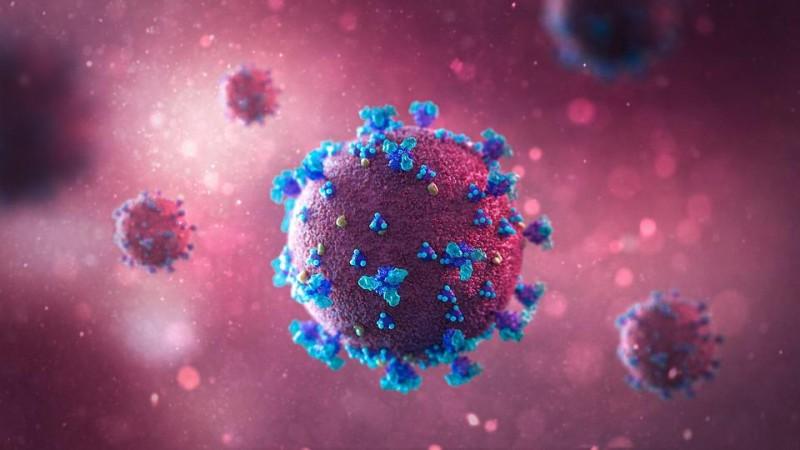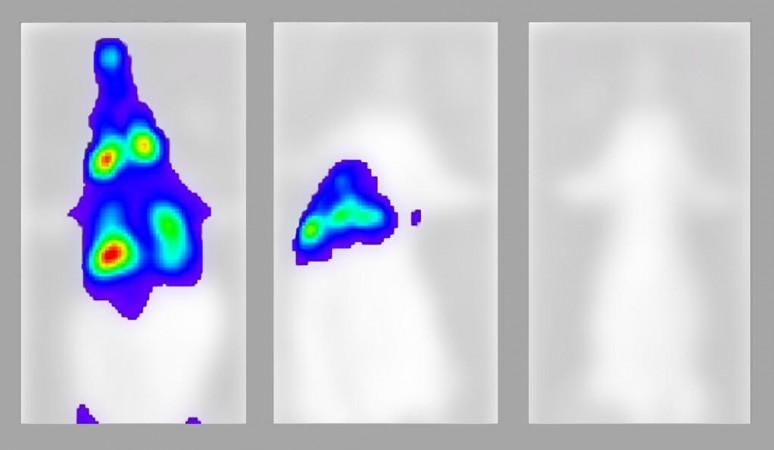With constant awareness being created about COVID-19, most people are aware of the manner in which the SARS-CoV-2 virus enters the body. Also, most of us are informed about the progression of the coronavirus' spread within the body. However, despite pictures of infected organs and cells being accessible, the instantaneous images of the pathogen's march have been unavailable. Now, scientists have captured videos of the unrelenting spread of the virus in real-time.
In a new multi-institutional study, researchers recorded the spread of the virus within mice in real-time, and tracked its spread over the course of six days; its movement from the nose to the lungs, and eventually other organs. While some of the images captured the lethal advancement of the infection, others showed how the prophylactic treatment with antibodies from recovered COVID-19 patients could prevent or treat the disease.
"For the first time, we were able to visualize the spread of the SARS-CoV-2 in a living animal in real-time, and importantly, the sites at which antibodies need to exert effects to halt progression of infection," said Dr. Priti Kumar, lead author of the study, in a statement. The study—whose pre-proof version was published in the journal Immunity—also observed the antibodies that could not 'call to' killer immune cells were less successful in countering the virus.
Tracking the March of SARS-CoV-2

For the study, the authors employed bioluminescent tagging and advanced microscopy to monitor the spread of the SARS-CoV-2; all the way to single-cell levels. It was observed that the pathogen followed the same route of infection in mice as it has been known to in human beings—the appearance of high viral loads in the nasal pathway and rapidly moving to the lungs, and in due course to other organs. Once the virus made its way to the brain, the animals eventually died.
Next, the team treated a group of infected mice with the plasma—containing antibodies against the virus—obtained from individuals who had recovered from COVID-19. This was found to stem the spread of the infection despite being given as late as three days following infection. However, when mice were administered these antibodies before being exposed (prophylactic Treatment) to SARS-CoV-2, it was found that infection in the exposed mice was prevented completely.
"The live reporting of virus spread by imaging can be harnessed to rapidly discern whether treatments will work or not in as little as three to five days, a crucial time-saving feature to develop countermeasures for current and future pandemics" stated Dr. Pradeep Uchil, co-lead author of the study.
Not All Antibodies Are Effective
An important finding was that not all antibodies functioned uniformly well. Antibodies play two primary roles. The first is to bind with pathogens and prevent their entry into cells. And the second is to perform "effector" functions. This serves as a vital link between the innate and adaptive immunity of the body, and is necessary for signaling the immune system to target and kill infected cells. It was found that antibodies which were devoid of the ability to recruit killer immune system cells were less efficacious in fighting the infection.

Dr. Andrés Finzi, co-lead author of the study, highlighted that antibodies are 'polyfunctional' and have numerous properties. "In this study, we show that their capacity to 'call for help' from other cells in the immune system and eliminate infected cells is required to provide optimal protection," he stated.
Emphasizing on the uncomplicated approach that antibodies have been dealt with, Dr. Kumar noted, that so far it has been accepted that neutralization of the virus was sufficient to prevent infection. "But antibodies have to be present at the right time in the right place in the body and in the right amount. Without the effector function, the neutralizing activity alone is not as effective," she stressed.

















